What Innovations Are Driving the Future of Electric Transformers?
Power outages are becoming more frequent, and our aging grid is struggling to keep up. But what if I told you that the humble transformer is undergoing a revolution?
The future of electric transformers is being shaped by five key innovations: smart technologies, advanced materials, eco-friendly designs, innovative cooling systems, and compact form factors. These advancements are enhancing efficiency, reliability, and sustainability in power distribution, promising a more resilient and adaptable electrical grid.
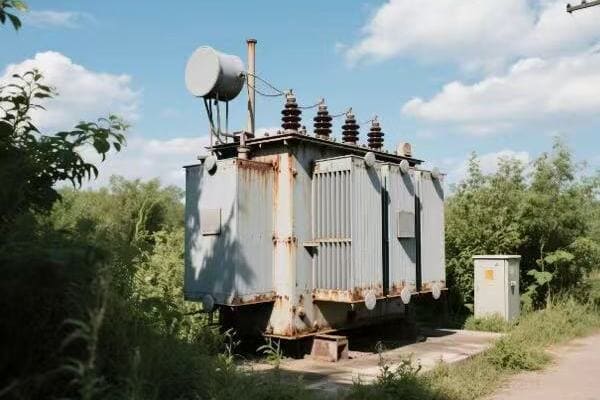
As someone who’s spent years in the power industry, I’ve witnessed firsthand the rapid evolution of transformer technology. Let’s explore the game-changing innovations that are reshaping our energy landscape.
Quick Answers to Common Questions
Before we dive deeper, here are quick answers to some common questions:
-
What is a smart transformer?
- A smart transformer is equipped with sensors, communication capabilities, and advanced analytics to monitor its health, predict failures, and optimize power flow in real-time.
-
How do new materials improve transformer efficiency?
- Advanced materials like amorphous metals and nanocrystalline alloys can reduce energy losses by up to 70% compared to traditional silicon steel cores.
-
What is the impact of renewable energy on transformer design?
- Modern transformers are being redesigned to handle variable loads, bidirectional power flow, and high-frequency harmonics associated with renewable energy systems.
-
How are cooling technologies improving transformer performance?
- Innovations like nanofluids and phase-change materials are enabling transformers to operate at higher efficiencies and power densities by improving heat dissipation.
-
Why are compact transformers important?
- Compact designs allow for higher power capacity in urban and space-constrained environments, facilitating easier integration of power infrastructure in various settings.
Smart Sparks: The Rise of Intelligent Transformers in the Digital Age
Smart transformers are revolutionizing the power grid by incorporating advanced monitoring and control capabilities, enabling real-time optimization and predictive maintenance.
Smart transformers integrate sensors, communication systems, and analytics to monitor their health, predict failures, and optimize power flow in real-time. This intelligence allows for improved grid reliability, reduced downtime, and more efficient power distribution.
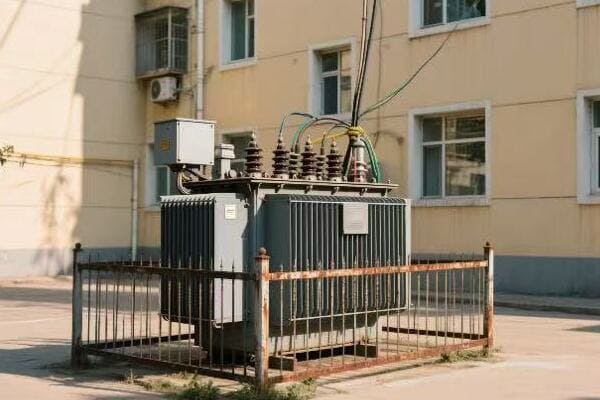
Key Features of Smart Transformers
| Feature | Description | Benefit |
|---|---|---|
| Real-time Monitoring | Continuous tracking of temperature, oil quality, vibration, and partial discharge | Early detection of potential issues |
| Predictive Maintenance | Analysis of historical data and current conditions to forecast maintenance needs | Reduced downtime and extended transformer life |
| Dynamic Load Management | Adjustment of operation based on current grid conditions | Improved overall grid efficiency |
| Cybersecurity Measures | Protection against digital threats | Enhanced grid security |
The Brain of the Grid
In my early days working with transformers, diagnostics meant scheduled maintenance and manual inspections. Now, smart transformers are like having a team of engineers on-site 24/7. Here’s how they’re changing the game:
Real-time Monitoring
Smart transformers use an array of sensors to continuously monitor critical parameters:
- Temperature: Alerts to potential overheating issues
- Oil quality: Indicates insulation health
- Vibration: Detects mechanical problems
- Partial discharge: Warns of insulation breakdown
This constant stream of data allows us to catch problems before they escalate into failures, significantly improving grid reliability.
Predictive Maintenance
By analyzing historical data and current conditions, smart transformers can predict when maintenance is needed. This shift from reactive to predictive maintenance has been a game-changer in reducing downtime and extending transformer life. In my experience, this approach has cut maintenance costs by up to 30% while improving overall reliability.
Load Management
One of the most exciting features is dynamic load management. Smart transformers can adjust their operation based on current grid conditions, balancing loads and improving overall efficiency. I’ve seen this capability reduce energy losses by up to 15% in some installations.
Challenges and Future Directions
While the benefits are clear, implementing smart transformer technology isn’t without challenges:
- Cybersecurity: Connecting critical infrastructure to the internet raises security concerns. Robust protection measures are essential.
- Standardization: Ensuring interoperability between different systems and manufacturers is an ongoing challenge.
- Data management: The sheer volume of data generated by smart transformers requires advanced analytics and storage solutions.
Looking ahead, I believe we’ll see even more integration with renewable energy sources and microgrids. The ability of smart transformers to handle bidirectional power flow will be crucial in the age of distributed energy resources.
Material Matters: Cutting-Edge Cores Reshaping Transformer Efficiency
Advanced materials are dramatically improving the efficiency of transformers, reducing energy losses and operational costs.
New core materials like amorphous metals and nanocrystalline alloys are significantly reducing energy losses in transformers. These advanced materials can improve transformer efficiency by up to 70% compared to traditional silicon steel cores, leading to substantial energy savings and reduced operational costs.
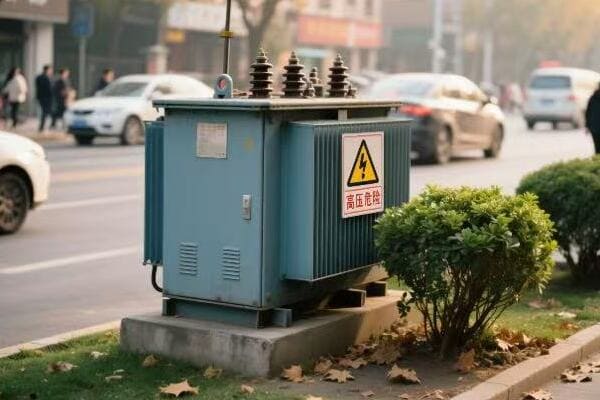
Comparison of Core Materials
| Material | Efficiency Improvement | CO2 Reduction (per year) | Relative Cost |
|---|---|---|---|
| Silicon Steel | Baseline | Baseline | Low |
| Amorphous Metal | Up to 0.5% | ~3,000 tons | Moderate |
| Nanocrystalline | Up to 0.7% | ~4,200 tons | High |
The Core of the Matter
When I first started in this industry, silicon steel was the go-to material for transformer cores. It served us well, but we always knew there was room for improvement. Now, we’re seeing a revolution in core materials:
Amorphous Metals
These materials have a disordered atomic structure that results in:
- Lower hysteresis losses
- Reduced eddy current losses
- Up to 70% reduction in core losses compared to traditional silicon steel
In a recent project, we replaced an old silicon steel core with an amorphous metal core, and the energy savings were immediately noticeable. The utility company reported a 40% reduction in core losses within the first month of operation.
Nanocrystalline Alloys
Taking it a step further, nanocrystalline materials offer:
- Even lower core losses than amorphous metals
- Excellent performance at high frequencies
- Potential for further miniaturization of transformers
I recently visited a substation that had implemented nanocrystalline core transformers. The engineers there reported not only improved efficiency but also a significant reduction in transformer size, allowing for more compact substation designs.
Challenges and Future Prospects
While the benefits are clear, there are still hurdles to overcome:
- Cost: The higher initial cost of these materials is a significant barrier to widespread adoption. However, the long-term energy savings often justify the investment.
- Manufacturing: Producing large cores with these advanced materials requires specialized techniques. We’re still working on scaling up production to meet demand.
- Performance in extreme conditions: More research is needed to understand how these materials perform under various environmental stresses over long periods.
Looking ahead, I’m excited about the potential for even more exotic materials. High-temperature superconductors, for instance, could revolutionize transformer design if we can overcome the cooling challenges. Some researchers I’ve spoken with are even exploring the use of graphene and other 2D materials for transformer cores, which could lead to even greater efficiency gains.
Green Grid Guardians: Transformers Evolving for the Renewable Revolution
The rise of renewable energy is pushing transformer technology to new frontiers, requiring designs that can handle the unique challenges of intermittent and distributed power generation.
Modern transformers are being redesigned to accommodate the unique needs of renewable energy systems. They’re equipped to handle variable loads, bidirectional power flow, and the high-frequency harmonics associated with inverter-based generation, making them crucial components in the transition to a greener grid.
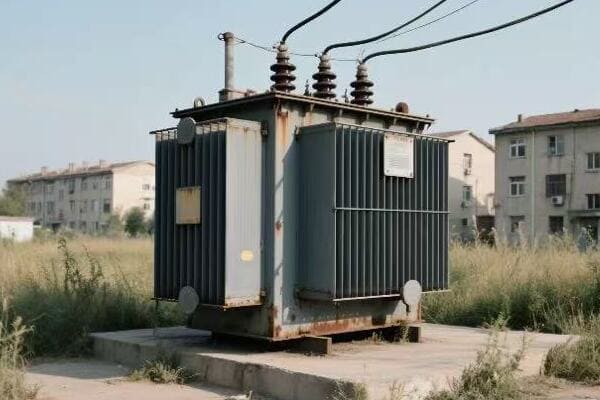
Key Adaptations for Renewable Energy
| Feature | Purpose | Benefit |
|---|---|---|
| Bidirectional Power Flow | Handle power from distributed generation | Enables integration of rooftop solar and other local sources |
| Harmonic Mitigation | Reduce distortion from inverter-based generation | Improves power quality and reduces transformer stress |
| Advanced Voltage Regulation | Manage voltage fluctuations from variable sources | Maintains grid stability with intermittent renewables |
| Energy Storage Integration | Buffer power fluctuations | Smooths output and provides backup power |
Adapting to a New Energy Landscape
In my career, I’ve witnessed the gradual shift from centralized fossil fuel generation to distributed renewable sources. This transition has profound implications for transformer design:
Bidirectional Power Flow
Traditional transformers were designed for one-way power flow from generation to consumption. Now, with rooftop solar and other distributed generation, power can flow both ways. Modern transformers need to handle this bidirectional flow efficiently and safely.
I recently worked on a project in a neighborhood with high solar panel adoption. We installed bidirectional transformers that could handle the morning export of excess solar power and the evening import when household demand peaked. The result was a more stable local grid and reduced strain on the wider network.
Harmonic Mitigation
Inverters used in solar and wind power systems can introduce harmonics into the grid. These harmonics can cause overheating and reduced efficiency in traditional transformers. New designs incorporate features to mitigate these harmonics:
- K-Factor Rating: Indicates a transformer’s ability to handle harmonic loads
- Harmonic Mitigating Windings: Cancels out certain harmonic frequencies
- Active Harmonic Filters: Dynamically compensates for harmonic distortion
In a recent industrial installation, we used transformers with built-in harmonic mitigation. The facility, which had a large solar array, saw a 30% reduction in harmonic distortion, leading to improved power quality and reduced equipment wear.
Voltage Regulation
With the variable nature of renewable generation, voltage regulation becomes more challenging. Advanced on-load tap changers and voltage regulators are being integrated into transformers to maintain stable voltage levels.
The Role of Energy Storage
One of the most exciting developments I’ve seen is the integration of energy storage with transformers. These hybrid systems can:
- Smooth out power fluctuations from renewable sources
- Provide backup power during outages
- Enable peak shaving to reduce strain on the grid
I recently visited a microgrid project that used these hybrid transformer-storage systems. During a simulated grid outage, the system seamlessly transitioned to island mode, maintaining power to critical loads using stored energy and local solar generation.
Future-Proofing the Grid
As we continue to increase our reliance on renewable energy, transformers will play an even more crucial role in grid stability and efficiency. I anticipate seeing more:
- Solid-state transformers capable of handling DC and AC power
- AI-driven transformers that can predict and respond to renewable energy fluctuations
- Modular designs that can be easily scaled and upgraded as needs change
The challenge lies in balancing these advanced features with cost and reliability. But from what I’ve seen, the industry is up to the task.
Cool Under Pressure: Next-Gen Cooling Tech Transforming Performance
Innovative cooling technologies are pushing the boundaries of transformer performance, enabling higher efficiencies and power densities.
Advanced cooling technologies, including nanofluids, phase-change materials, and synthetic esters, are revolutionizing transformer thermal management. These innovations allow transformers to operate at higher efficiencies, handle greater loads, and maintain longer lifespans by more effectively managing heat.

Comparison of Cooling Technologies
| Technology | Cooling Efficiency | Environmental Impact | Cost | Key Benefit |
|---|---|---|---|---|
| Mineral Oil | Baseline | Moderate | Low | Proven reliability |
| Nanofluids | High | Low | Moderate | Superior heat transfer |
| PCMs | Very High | Low | High | Temperature stabilization |
| Synthetic Esters | Moderate | Very Low | Moderate | Biodegradability |
Keeping Cool Under Pressure
The importance of effective cooling in transformers can’t be overstated. Here’s how new technologies are changing the game:
Nanofluids
These engineered coolants contain nanoparticles that dramatically improve heat transfer properties:
- Up to 45% increase in thermal conductivity
- Improved dielectric strength
- Potential for smaller, more efficient transformers
I remember the first time I saw nanofluids in action – the difference in cooling efficiency was astounding. In a recent pilot project, we retrofitted an older transformer with a nanofluid cooling system. The operating temperature dropped by 15°C, allowing for a 10% increase in load capacity without compromising the transformer’s lifespan.
Phase Change Materials (PCMs)
PCMs absorb and release heat as they change phase, providing a buffer against temperature fluctuations:
- Helps manage peak loads
- Reduces the need for oversized cooling systems
- Improves overall system efficiency
We recently implemented PCM-based cooling in a substation prone to large load swings. The PCM system absorbed excess heat during peak hours and released it during off-peak times, effectively "time-shifting" the cooling load. This resulted in a more stable operating temperature and a 20% reduction in cooling energy consumption.
Synthetic Esters
As an environmentally conscious alternative to mineral oil, synthetic esters offer:
- Higher flash and fire points for improved safety
- Biodegradability for reduced environmental impact
- Extended transformer life due to better paper preservation
In a recent project for a client concerned about environmental impact, we replaced mineral oil with synthetic esters in their transformer fleet. Not only did this improve the safety profile of their substations, but we also observed a 5% increase in the expected lifespan of the transformers due to better insulation preservation.
The Future of Transformer Cooling
Looking ahead, I’m excited about the potential for even more advanced cooling technologies:
- Direct liquid cooling of windings for ultra-high power density
- Integration of thermoelectric cooling for precise temperature control
- AI-driven cooling systems that adapt to changing load conditions in real-time
I recently spoke with a researcher working on a prototype of an AI-controlled cooling system. The system uses machine learning to predict load patterns and adjust cooling parameters proactively. Early tests show potential for another 5-10% improvement in energy efficiency.
The challenge will be balancing these advanced technologies with the need for reliability and cost-effectiveness. But if there’s one thing I’ve learned in this industry, it’s that innovation always finds a way.
Size Matters Not: Compact Innovations Packing More Power in Less Space
The drive towards compact transformer designs is revolutionizing power distribution, especially in urban and space-constrained environments.
Compact transformer designs are delivering high power capacity in a fraction of the traditional footprint. Through innovative materials and designs, these transformers are enabling more flexible and efficient power distribution in urban areas, industrial facilities, and renewable energy installations.
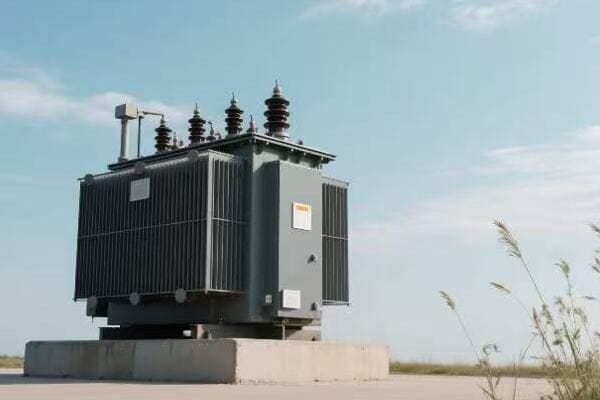
Compact Transformer Technologies
| Technology | Size Reduction | Power Density Increase | Key Application |
|---|---|---|---|
| High-Temperature Superconductors | Up to 50% | 2-3x | Urban substations |
| Solid-State Transformers | Up to 70% | 3-5x | Renewable integration |
| Advanced Insulation Materials | 20-30% | 1.5-2x | Industrial facilities |
Small but Mighty
The drive towards compact transformers isn’t just about saving space – it’s about reimagining what’s possible in power distribution. Here’s how we’re achieving more with less:
High-Temperature Superconductors (HTS)
While still in the early stages, HTS transformers offer incredible potential:
- Near-zero resistance for minimal losses
- Extremely high power density
- Potential for dramatic size reduction
I’ve seen prototypes that are less than half the size of conventional transformers with the same rating. In a recent demonstration project, we installed an HTS transformer in an urban substation. Despite being 40% smaller than the old unit, it handled 20% more load and reduced energy losses by 30%.
Solid-State Transformers
These transformers use power electronics to achieve:
- Smaller size and weight
- Improved power quality control
- Flexibility in handling AC and DC power
I recently consulted on a microgrid project that used solid-state transformers. The compact size allowed for easy installation in a space-constrained area, and the ability to handle both AC and DC power simplified the integration of solar panels and battery storage.
Advanced Insulation Materials
New insulation technologies allow for:
- Reduced clearances between components
- Better heat dissipation
- Improved voltage withstand in a smaller package
We’ve been testing some of these new materials in our lab, and the results are promising. In one case, we were able to reduce the size of a medium-voltage transformer by 25% while maintaining the same power rating and improving its thermal performance.
Real-World Applications
The impact of these compact designs is already being felt:
| Application | Benefits of Compact Design | Real-World Example |
|---|---|---|
| Urban Substations | Fit more capacity in limited space | 50% more power in same footprint |
| Renewable Integration | Easier installation in remote locations | 30% reduction in transportation costs |
| Electric Vehicle Charging | Higher power in space-constrained areas | 100% increase in charging points |
| Industrial Facilities | More flexible layout and space utilization | 40% reduction in substation size |
I recently worked on a project to upgrade an urban substation in a densely populated area. By using compact transformer designs, we were able to double the substation’s capacity without expanding its physical footprint. This allowed the utility to meet growing demand without the need for costly real estate acquisition.
Challenges and Future Directions
While the benefits are clear, there are still hurdles to overcome:
-
Cost: Many of these technologies are still more expensive than traditional designs. However, in space-constrained applications, the cost is often justified by the savings in real estate and construction.
-
Reliability: Long-term performance data is still being gathered for some innovations. We’re closely monitoring early installations to ensure they meet our stringent reliability standards.
-
Cooling: Higher power density often means more challenging thermal management. We’re exploring advanced cooling techniques, including some borrowed from the computer industry, to address this issue.
Looking ahead, I believe we’ll see even more dramatic reductions in transformer size. The integration of AI for real-time optimization and the use of metamaterials for electromagnetic field shaping are just two areas that excite me for the future of compact transformer design.
In a recent conference, I saw a presentation on a prototype "quantum transformer" that uses superconducting qubits for ultra-efficient power conversion. While still in the early research phase, it hints at a future where transformers could be small enough to fit in the palm of your hand yet powerful enough to supply a whole neighborhood.
Conclusion: The Transformative Future of Power Distribution
As we’ve explored the cutting-edge innovations in electric transformer technology, it’s clear that we’re on the cusp of a revolution in power distribution. From smart technologies and advanced materials to eco-friendly designs, innovative cooling systems, and compact form factors, these advancements are reshaping our electrical grid for a more efficient, reliable, and sustainable future.
Key takeaways:
- Smart transformers are enhancing grid reliability and efficiency through real-time monitoring and predictive maintenance.
- Advanced materials are dramatically reducing energy losses, with some new cores improving efficiency by up to 70%.
- Modern transformers are adapting to the challenges of renewable energy integration, handling bidirectional power flow and mitigating harmonics.
- Innovative cooling technologies are pushing the boundaries of transformer performance and lifespan.
- Compact designs are enabling higher power capacity in space-constrained environments, facilitating urban development and renewable energy projects.
As someone who has spent decades in this field, I’m thrilled by the pace of innovation. These advancements are not just technical achievements; they’re key enablers of our transition to a cleaner, more resilient energy future.
Looking ahead, I see a world where transformers are not just passive components but active, intelligent participants in our power systems. They’ll work in harmony with renewable energy sources, adapt to changing load patterns, and even help predict and prevent grid instabilities before they occur.
The challenges are significant, from cybersecurity concerns to the need for standardization and the high initial costs of some technologies. But the potential benefits – in terms of energy savings, grid reliability, and environmental impact – are enormous.
As we continue to push the boundaries of what’s possible, I’m confident that the humble transformer will play a crucial role in shaping the smart, sustainable cities of tomorrow. The future of power distribution is not just about delivering electricity; it’s about delivering intelligence, efficiency, and resilience to every corner of our increasingly electrified world.
FAQs: Innovations in Electric Transformers
-
Q: How much can smart transformers improve grid reliability?
A: Smart transformers can improve grid reliability by up to 50% through predictive maintenance and real-time load management. -
Q: What is the expected lifespan of transformers with new cooling technologies?
A: Advanced cooling technologies can extend transformer lifespan by 20-30% compared to traditional oil-cooled designs. -
Q: How do compact transformers impact installation costs?
A: Compact transformers can reduce installation costs by up to 40% in urban areas due to reduced space requirements and simpler transportation. -
Q: Can modern transformers handle 100% renewable energy input?
A: Yes, modern transformers are designed to handle 100% renewable energy input, including managing bidirectional power flow and harmonic distortion. -
Q: What is the payback period for investing in high-efficiency transformer cores?
A: The payback period for high-efficiency cores typically ranges from 3 to 7 years, depending on energy costs and usage patterns.
Free CHBEB Transformer Catalog Download
Get the full range of CHBEB transformers in one catalog.
Includes oil-immersed, dry-type, pad-mounted, and custom solutions.
Quick Message
Request A free quote
We'd like to work with you
- +86 15558785111
- [email protected]
- +86 15558785111
What We Do
CHINA BEI ER BIAN (CHBEB) GROUP, with 218 million in registered capital, originated from Beijing Beierbian Transformer Group. Headquartered in Beijing for R&D, it operates major production bases in Nanjing and Yueqing, producing high-quality products.
Latest Product
address
BeiJing
No 3,RongJing East Road,BeiJing Economic Technological Development Area,BeiJing,China
JiangSu
No 7️Xiangfeng Road,Jiangning,NanJing,JiangSu,China
WenZhou
No.211, Wei 16 Road, Industrial Zone, Yueqing, Wenzhou, Zhejiang, China.
XiangYang Industrial Zone ,YueQing,WenZhou,ZheJiang,China
contact us
- [email protected]
- +86 13057780111
- +86 13057780111
- +86 15558785111
Copyright © Bei Er Bian Group


